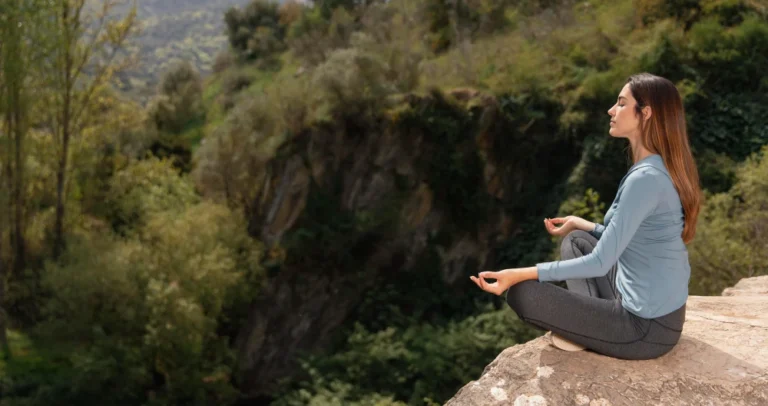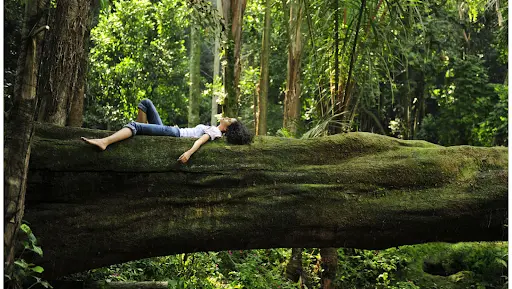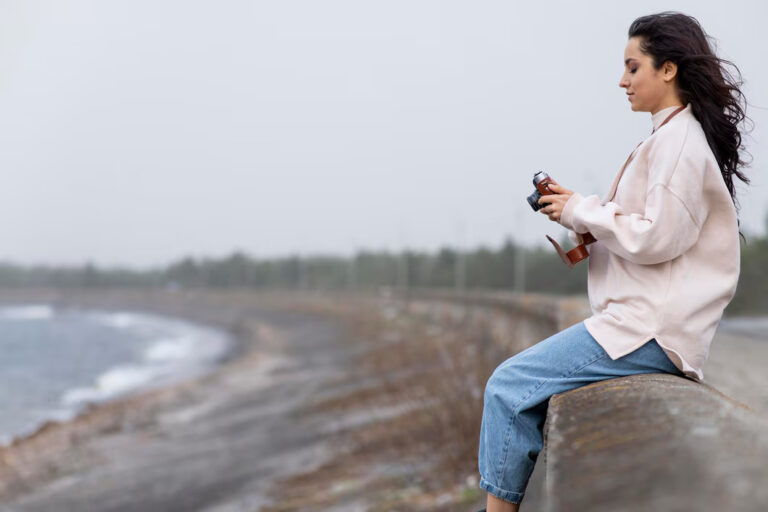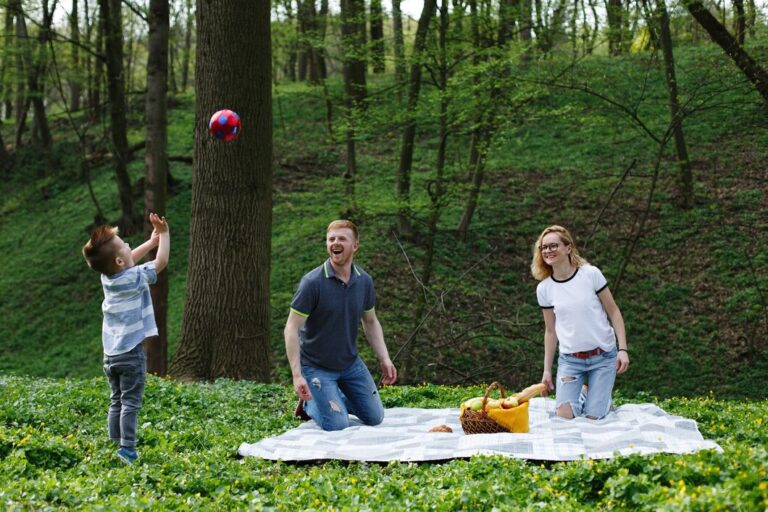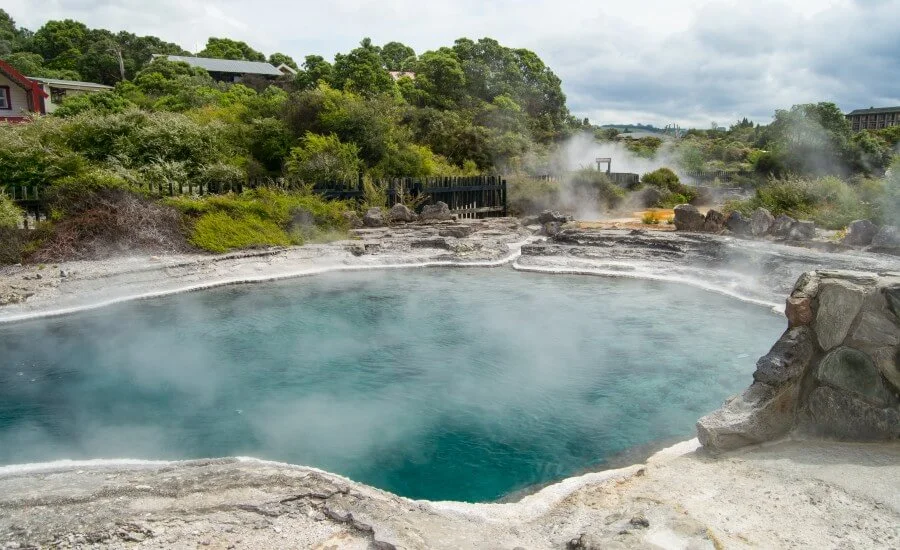
Steam rises gently from the mineral-rich waters, disappearing into the crisp mountain air. Your body sinks deeper into the natural stone basin, tensions dissolving as centuries-old thermal waters work their quiet magic. No notifications ping, no emails demand attention, no screens glow in the twilight. Here, submerged in Earth’s healing waters, you’ve found something increasingly rare in our hyperconnected world – a sanctuary where digital distractions cannot follow and where nature’s oldest therapy restores both body and mind.
Long before modern medicine and certainly before digital technology, humans discovered the remarkable healing properties of thermal springs. Indigenous cultures worldwide considered these waters sacred, recognizing their ability to ease physical ailments and calm troubled spirits.
Roman bathhouses, Japanese onsen, and Turkish hammams built entire cultural practices around thermal immersion, understanding that these waters offered not just physical relief but psychological restoration.
Today, as chronic stress and digital burnout reach epidemic proportions, these ancient healing traditions offer something our devices cannot – genuine, multisensory restoration that engages our bodies at the deepest level.
Natural healing hot springs therapy works precisely because it pulls us fully into the present moment through physical sensation, natural beauty, and the elemental power of water and earth combined.
In this guide, you’ll discover the world’s most therapeutic best natural healing hot springs destinations specifically selected for their stress-relieving properties and their ability to facilitate genuine disconnection from technology.
These remarkable waters offer more than relaxation – they provide environments where digital detox happens naturally, where the richness of immediate experience renders screens irrelevant, and where ancient natural healing traditions meet modern wellness needs without technological intermediaries.
The Science of Hot Springs Therapy: Beyond Simple Relaxation

Before exploring specific destinations, it’s worth understanding why hot springs therapy provides such effective stress relief – particularly when combined with digital disconnection.
Mineral Medicine
Natural hot springs contain dissolved minerals absorbed during their journey through Earth’s crust. These minerals – including magnesium, calcium, lithium, and sulfur compounds – have demonstrated therapeutic effects:
- Magnesium Absorption: This essential mineral, deficient in many modern diets, regulates stress hormones and promotes GABA production (a calming neurotransmitter). Warm water immersion allows transdermal magnesium absorption, directly addressing stress at the biochemical level.
- Anti-Inflammatory Effects: Sulfur compounds, particularly hydrogen sulfide, reduce inflammatory processes associated with chronic stress. Research shows these compounds activate anti-inflammatory pathways through transdermal absorption, providing relief from stress-related physical tension.
- Trace Element Balance: Many hot springs contain trace minerals like lithium (a mood stabilizer), selenium (supporting thyroid function), and zinc (aiding immune response). These elements support systems commonly disrupted by chronic stress.
Physiological Restoration
Beyond mineral benefits, the physical properties of hot springs create powerful physiological effects:
- Hydrostatic Pressure: Water immersion creates gentle pressure on the body, improving circulation and lymphatic flow. This pressure has been shown to reduce levels of stress hormones while increasing endorphin production.
- Parasympathetic Activation: Warm water immersion triggers a shift from sympathetic (fight-or-flight) to parasympathetic (rest-and-digest) nervous system dominance – essentially resetting stress response systems overactivated by digital environments.
- Improved Sleep Architecture: Regular thermal bathing improves sleep quality by altering core body temperature rhythms. The temperature drop after leaving the waters signals sleep-promoting mechanisms, addressing the sleep disruption common in digitally overwhelmed individuals.
Psychological Dimensions
The psychological benefits of hot springs therapy are equally significant:
- Nature Connection: Most therapeutic hot springs exist in natural settings that provide additional benefits through what environmental psychologists call “soft fascination” – effortless attention toward natural elements that restores cognitive function.
- Sensory Grounding: The multisensory experience of thermal bathing – feeling water temperature and mineral texture, smelling natural elements, hearing water sounds, seeing natural beauty – creates powerful grounding that counteracts digital dissociation.
- Contemplativeness Induction: The combination of physical comfort, reduced external stimulation, and natural beauty creates ideal conditions for contemplative states associated with stress reduction, perspective-taking, and insight generation.
Key Points:
- Transdermal mineral absorption addresses stress at the biochemical level
- Hydrostatic pressure and warmth reset overactive stress response systems
- Natural settings provide additional cognitive restoration through soft fascination
- Multisensory engagement creates grounding impossible in digital environments
- Regular thermal bathing improves sleep quality disrupted by digital habits
Best Natural Healing Hot Springs Destinations in the World
1. Onsen Retreats of Hakone, Japan
For over a millennium, Japanese culture has refined the art of hot spring bathing into the mindful practice of onsen – perhaps the world’s most sophisticated approach to thermal therapy. The volcanic region of Hakone, just 90 minutes from Tokyo, offers the perfect introduction to this tradition with over 20 distinct spring sources rich in sulfur, sodium chloride, and iron.
What makes Hakone’s onsen ideal for stress relief is their integration of thermal waters with traditional Japanese mindfulness practices. Ryokan (traditional inns) built around private thermal sources create environments where every element – from minimalist architecture to seasonal kaiseki cuisine – supports present-moment awareness.
The Japanese bathing protocol itself encourages digital disconnection. All electronics are left in guest rooms (never brought to bathing areas), while the ritualized washing process before immersion creates a clear transition from everyday concerns to contemplative presence. Many ryokan additionally provide yukata (cotton robes) rather than regular clothes between bathing sessions, eliminating even the physical reminder of daily life.
The region offers exceptional variety: mountainside rotenburo (outdoor baths) overlooking Lake Ashi, intimate family-run establishments with centuries of history, and serene forest baths where cedar aromatherapy enhances mineral benefits. For comprehensive healing, many Hakone establishments incorporate shinrin-yoku (forest bathing) trails connecting different thermal sources, combining two evidence-based stress-reduction practices.
Unplugged Experience Highlights:
- Dawn soaking in outdoor baths as Mount Fuji emerges from morning mist
- Alternating between different mineral compositions to address specific concerns
- Seasonal kaiseki meals sourced from local ingredients between soaking sessions
- Evening stargazing from therapeutic waters after digital devices are stored away
Practical Information:
- Nearest Airport: Tokyo Haneda with rail connections to Hakone
- Best Healing Properties: Sulfur compounds for skin conditions and respiratory health
- Digital Detox Level: High (most traditional ryokan have limited or no Wi-Fi)
- Best Times: Late autumn for colorful foliage or early spring for cherry blossoms
- Signature Property: Gora Kadan, a former imperial retreat with private in-room onsen
Unplugged Traveler Testimony: “I arrived in Hakone constantly checking my phone – even in Tokyo’s subway. By the second day at my ryokan, I realized I hadn’t thought about my device for hours. Something about the rhythmic bathing schedule, the mineral water’s physical sensation, and the quiet design allowed my mind to settle in ways no meditation app ever achieved. I ended up leaving my phone in the safe for the final three days.” – Michelle, 38
2. Thermal Caves of Saturnia, Italy

In the heart of Tuscany’s Maremma region, the thermal waters of Saturnia have flowed continuously for over 3,000 years – attracting Etruscan settlers, Roman nobility, and now, stressed modern travelers seeking ancient healing. What makes these springs exceptional for stress relief is their perfect 99.5°F (37.5°C) temperature – precisely matching human body temperature for effortless, extended immersion.
The most therapeutic experience comes from the natural cascades of Cascate del Mulino, where sulfurous waters have carved travertine pools into sculptural formations over millennia. These cascading thermal pools create a natural hydrotherapy circuit – each pool offering different water pressure and mineral concentration as the waters flow downhill.
Saturnia’s waters emerge with extraordinary mineral richness – containing sulfur, carbon, calcium, and magnesium along with rare trace elements like antimony and boron. This mineral profile specifically addresses inflammation, muscle tension, and skin regeneration – physical manifestations of chronic stress.
What makes Saturnia ideal for unplugged experiences is its 24-hour accessibility and relationship to circadian rhythms. The most profound healing experiences happen during predawn hours (4-6am) when the pools remain nearly empty, starlight reflects off mineral-white formations, and steam creates an otherworldly atmosphere impossible to capture digitally. These early immersions reset circadian rhythms disrupted by digital habits, while the isolation naturally discourages device use.
The surrounding Maremma landscape of olive groves, vineyards, and medieval hill towns creates a complete stress-relief environment extending beyond the waters themselves. Local agriturismi (farm stays) offer authentic accommodations where simple agricultural rhythms provide further digital detachment.
Key Points:
- Perfect body-temperature waters allow extended therapeutic immersion
- Natural travertine formations create varied hydrotherapy experiences
- Exceptionally mineral-rich waters address physical manifestations of stress
- 24-hour accessibility allows predawn experiences when digital distraction is minimal
- Surrounding agricultural landscapes extend the therapeutic environment
3. Blue Lagoon Retreat, Iceland

While Iceland’s Blue Lagoon has gained fame through social media, its true therapeutic potential emerges only for visitors willing to move beyond the photograph-and-leave approach of digital tourists. This extraordinary geothermal sea, rich in silica, algae, and minerals, offers some of the world’s most scientifically-validated healing properties specifically beneficial for stress-related conditions.
What makes the Blue Lagoon exceptional for stress relief is its unique bioactive components. The waters contain a rare form of blue-green algae that produces remarkable anti-inflammatory compounds, addressing physical tension patterns created by chronic stress. The high silica content forms a natural barrier on skin, allowing longer mineral absorption while the waters’ distinctive milky-blue appearance creates a psychologically immersive environment unlike everyday experience.
The recently developed Retreat area significantly enhances therapeutic potential by limiting visitor numbers and creating spaces specifically designed for contemplative immersion rather than social media moments. Its subterranean relaxation areas built into volcanic rock formations, with lava walls meeting therapeutic waters, create environments where digital devices would be both impractical and inappropriate.
For comprehensive healing, the Retreat’s “ritual” combines water immersion with silica, algae, and mineral salt treatments in a guided sequence lasting over two hours – long enough to break digital dependency patterns and reset attention spans shortened by constant connectivity. This ritual creates natural digital separation by requiring full sensory engagement through tactile experiences impossible to duplicate through screens.
The surrounding lunar-like landscape of black lava fields creates additional psychological distance from everyday concerns, while Iceland’s midnight sun (summer) or northern lights (winter) connect visitors to natural phenomena operating on timeframes vastly different from digital immediacy.
Unplugged Experience Highlights:
- Floating in mineral-rich waters beneath the aurora borealis (winter)
- Combining water therapy with in-water massage treatments
- Experiencing the full Retreat ritual sequence without time pressure
- Contrasting warm immersion with brief exposure to Iceland’s invigorating air
Practical Information:
- Nearest Airport: Keflavík International (20 minutes away)
- Best Healing Properties: Bioactive algae and silica for skin and inflammatory conditions
- Digital Detox Level: Moderate (retreats encourage disconnection but don’t prohibit devices)
- Best Times: September-March for northern lights or June for midnight sun
- Signature Experience: The four-hour Retreat Ritual combining all therapeutic elements
4. Thermal Springs of Pamukkale-Hierapolis, Turkey

Few hot springs destinations combine therapeutic waters, extraordinary natural formations, and ancient healing traditions like Pamukkale in southwestern Turkey. This UNESCO World Heritage site features cascading travertine terraces formed over millennia as calcium-rich thermal waters cooled and deposited mineral shelves creating natural pools with remarkable therapeutic properties.
What makes Pamukkale exceptional for stress relief is its integration of historical perspective with physical healing. The adjacent ancient city of Hierapolis was one of the world’s earliest wellness destinations, with thermal facilities dating to the 2nd century BCE. The site’s Antique Pool allows visitors to soak among submerged marble columns and ancient sculptures – creating profound connection to generations who sought healing in these same waters thousands of years before digital stressors existed.
The spring water emerges at 94-97°F (35-36°C) with extraordinary calcium bicarbonate concentration along with magnesium, sulfur, and several rare minerals. This composition specifically addresses bone health, circulation, and skin regeneration while the calcium content creates a sedative effect on the nervous system – naturally calming stress responses.
The terraced white pools extending across the hillside create naturally varied therapeutic experiences as water temperature and mineral concentration change subtly between levels. This variety encourages mindful body awareness as soakers notice different sensations in different pools – creating the present-moment focus essential for meaningful digital disconnection.
For comprehensive healing, nearby traditional Turkish hammams offer complementary therapeutic experiences combining steam, massage, and thermal immersion. These cultural wellness practices require complete digital separation while engaging healers who’ve inherited techniques refined over centuries.
Key Points:
- Ancient wellness site with 2,000+ years of continuous healing traditions
- Calcium-rich waters produce natural sedative effects on the nervous system
- Travertine terraces create varied therapeutic environments in one location
- Historical perspective provides meaningful contrast to modern digital stress
- Traditional hammam practices offer complementary therapeutic approaches
5. Hot Spring Ryokan of Kurokawa Onsen, Japan

While Hakone offers accessible Japanese hot spring experiences, the remote mountain village of Kurokawa on Kyushu Island provides Japan’s most authentic therapeutic onsen environment. This remarkably preserved traditional hot spring town, nestled in a forested river valley, maintains bathing traditions largely unchanged for centuries.
What makes Kurokawa exceptional for stress relief is its complete separation from modern distractions. The village prohibits large concrete structures, neon signs, and conspicuous power lines, creating visual tranquility that begins the unwinding process before waters are even touched. Its 24 ryokan (traditional inns) maintain distinctive bathing environments ranging from cave baths to riverside rock pools, forest rotenburo to intimate cypress tubs.
The therapeutic highlight comes through the village’s unique tegata (bath passport) system allowing visitors to experience multiple distinctly different therapeutic waters in a single day.
This bathing circuit creates natural mindfulness as attention focuses on subtle mineral differences, temperature variations, and setting changes between establishments. Most visitors report completely forgetting digital devices during this circuit as sensory richness captures full attention.
The waters themselves contain varying combinations of sodium chloride, calcium, magnesium, and mild naturally occurring carbon dioxide that creates a gentle effervescence against the skin. This composition specifically addresses muscle tension, circulation issues, and nervous system regulation – physical manifestations of digital-age stress.
What elevates Kurokawa beyond other Japanese onsen towns is its integration of bathing with wider Japanese wellness traditions.
Most ryokan incorporate traditional floor seating without chairs, futon sleeping on tatami mats, seasonal kaiseki cuisine, and minimalist aesthetics – all elements that naturally separate visitors from modern postural habits and consumption patterns tied to digital lifestyles.
Unplugged Experience Highlights:
- Following the nyuto meguri (bath circuit) between distinctive bathing environments
- Evening soaking beneath stars while listening to mountain stream sounds
- Morning kaiseki meals incorporating seasonal local ingredients and presentation
- Alternating between different water compositions to address specific conditions
Practical Information:
- Nearest Airport: Kumamoto with bus connections to Kurokawa
- Best Healing Properties: Sodium chloride and carbon dioxide for circulation
- Digital Detox Level: Very high (minimal connectivity throughout village)
- Best Times: Mid-October for fall colors or late April for cherry blossoms
- Signature Experience: The complete bath circuit with traditional ryokan stay
Unplugged Traveler Testimony: “On my first evening in Kurokawa, I instinctively reached for my phone to photograph the beautiful outdoor bath, then realized I had left it in my room without even thinking about it.
By the next morning, I noticed how much more I was seeing – steam patterns on the water surface, subtle minerals on rock edges, expressions on people’s faces. The combination of different baths, each with distinctive properties, kept me so engaged in physical sensations that I completely forgot about my usual digital habits.” – David, 45
6. Ancient Thermal Baths of Budapest, Hungary
Few cities integrate therapeutic waters into their cultural fabric as thoroughly as Budapest, where over 120 hot springs feed bathing establishments ranging from ancient Turkish baths to Art Nouveau swimming palaces. What makes Budapest exceptional for stress relief is the extraordinary architectural grandeur of its historic bathing establishments, creating environments where everyday concerns naturally diminish against the backdrop of palatial spaces devoted to wellbeing.
The therapeutic highlight comes from experiencing the complete historical spectrum of bathing traditions preserved within a single city. Király Baths maintains the Ottoman Turkish bathing sequence established in the 16th century, with focus on progressive heat experiences and steam therapy.
The neo-Baroque Széchenyi Baths offers 18 distinct pools of varying mineral composition and temperature, creating one of the world’s most comprehensive hydrotherapy circuits. The Art Nouveau masterpiece Gellért Baths combines serious therapeutic approaches with architectural beauty that elevates the spirit through aesthetic appreciation.
Budapest’s waters emerge with exceptional mineral diversity, containing calcium, magnesium, hydrogen carbonate, sulfate, and sodium, along with trace elements including fluoride and metaboric acid. This composition specifically addresses joint inflammation, circulation issues, and metabolic functions often disrupted by sedentary digital lifestyles.
What makes Budapest ideal for unplugged experiences is the social bathing culture that naturally discourages device use through both practical considerations (water damage) and social norms. Locals visit these establishments for serious wellness purposes rather than photo opportunities, creating cultural expectations that naturally limit digital distraction. The chess players who gather daily at Széchenyi’s outdoor pools exemplify this engaged, present approach to thermal bathing.
For comprehensive healing, Budapest offers complementary wellness traditions including traditional Hungarian massage, drinking therapies using mineral waters, and medical spa treatments supervised by doctors trained in balneotherapy (scientific water therapy) – creating complete therapeutic experiences impossible to duplicate through digital wellness applications.
Key Points:
- Historic architectural environments create psychological elevation beyond everyday concerns
- Diverse bathing traditions from Ottoman to Art Nouveau offer varied therapeutic approaches
- Exceptional mineral diversity addresses multiple stress-related physical conditions
- Local bathing culture naturally discourages digital behaviors through social norms
- Complementary medical spa traditions provide comprehensive healing approaches
7. Geothermal Lagoons of the Azores, Portugal

In the middle of the Atlantic Ocean, the Azores archipelago represents one of the world’s most active thermal regions, with dozens of healing springs emerging from its volcanic landscape. The island of São Miguel – known as the “Green Island” – offers the most diverse concentration of therapeutic waters, ranging from iron-rich heated ocean pools to steaming calderas where meals cook underground using geothermal heat.
What makes the Azores exceptional for stress relief is the extraordinary diversity of thermal experiences available within a small geographic area. The Terra Nostra Gardens feature a historic amber-colored thermal pool rich in iron and surrounded by one of the world’s most diverse botanical collections – combining hydrotherapy with forest bathing for enhanced stress reduction.
The Caldeira Velha offers cascading thermal pools of varying temperatures set within pristine Atlantic rainforest. The coastal community of Ferraria provides the rare experience of soaking in ocean water naturally heated by volcanic vents, where hot springs meet tidal pools.
The islands’ remote mid-Atlantic location creates natural separation from everyday concerns, while limited connectivity infrastructure throughout the archipelago supports digital disconnection without effort. Many thermal areas have no mobile reception by nature of their volcanic caldera locations, creating technological barriers that enhance rather than diminish the experience.
The waters themselves contain exceptional mineral diversity including significant iron, manganese, boron, and fluoride along with traditional healing minerals like magnesium and sulfur.
This distinctive composition specifically addresses immune function, energy regulation, and micronutrient deficiencies often associated with modern stress patterns and indoor digital lifestyles.
What elevates the Azorean thermal experience is its integration with the islands’ remarkable biodiversity and sustainable living practices. Many thermal areas connect directly to hiking trails through ancient laurisilva forests, crater lakes, and volcanic landscapes, creating comprehensive wellness experiences that combine therapeutic waters with physical activity and nature connection.
Unplugged Experience Highlights:
- Soaking in the historic Terra Nostra thermal pool surrounded by 225-year-old botanical gardens
- Experiencing ocean-meet-thermal waters at Ferraria during low tide
- Alternating between cascading thermal pools of different temperatures at Caldeira Velha
- Connecting thermal soaking with hiking through pristine volcanic landscapes
Practical Information:
- Nearest Airport: João Paulo II Airport in Ponta Delgada
- Best Healing Properties: Iron and manganese for energy and immune support
- Digital Detox Level: High (limited connectivity throughout island, none at many thermal sites)
- Best Times: May-June for wildflowers or September for warm weather without crowds
- Signature Experience: The comprehensive thermal circuit combining forest, garden, and coastal springs
8. Desert Hot Springs of Ojo Caliente, New Mexico, USA

In the high desert of northern New Mexico, the springs of Ojo Caliente have provided healing waters to indigenous peoples for over 3,000 years before becoming one of America’s oldest natural spas.
What makes Ojo exceptional for stress relief is its extraordinary combination of therapeutic waters, stark desert beauty, and indigenous healing traditions in a setting naturally conducive to digital separation.
The springs feature a remarkable geological phenomenon – four distinct thermal water sources emerging in close proximity, each with different mineral compositions addressing specific healing applications. The lithia springs contain one of the few natural sources of lithium, a mineral known for mood stabilization.
The iron springs provide energizing properties for stress-related fatigue. The soda springs support digestive functions often disrupted by stress, while the arsenic springs historically addressed skin conditions and immune function.
The stark beauty of the surrounding high desert landscape, with its distinctive rock formations, sagebrush expanses, and dramatic skies, creates natural conditions for perspective-shifting – what environmental psychologists call “awe experiences” that reduce self-referential thinking common in digitally-dominated consciousness. Many visitors report that the combination of expansive landscape and mineral immersion naturally reduces rumination and worry patterns.
What elevates Ojo beyond conventional hot springs is its respectful integration of indigenous healing perspectives from the nearby Tewa Pueblo communities who have maintained relationship with these waters for millennia. The spa incorporates traditional Native American approaches to the healing relationship between mineral waters, indigenous plants, seasonal changes, and spiritual wellbeing – creating comprehensive healing beyond physical relaxation.
For unplugged experiences, the historic nature of the property naturally limits connectivity, while designated “whisper areas” and technology restrictions around specific pools create social norms supporting digital separation. Private outdoor soaking tubs connected to adobe accommodations provide intimate healing spaces where devices seem naturally out of place against the traditional building materials and minimalist desert aesthetic.
Key Points:
- Four distinct mineral compositions offer targeted therapies for specific conditions
- Rare natural lithium content specifically addresses mood and stress response
- High desert landscape creates perspective-shifting “awe experiences”
- Indigenous healing traditions provide holistic context beyond physical therapy
- Historic adobe architecture and designated quiet zones naturalize digital separation
9. Volcanic Hot Springs of Arenal, Costa Rica

At the base of Costa Rica’s most active volcano, the thermal springs of Arenal offer a unique combination of volcanic mineral waters and primary rainforest immersion. What makes Arenal exceptional for stress relief is the extraordinary juxtaposition of primal elements – volcanic heat emerging through pure rainforest waters surrounded by some of Earth’s most biodiverse ecosystems.
The therapeutic highlight comes from waters naturally heated by magmatic activity while filtered through rainforest aquifers, creating mineral-rich springs with uncommonly high alkalinity, significant magnesium, and trace volcanic minerals including zinc and copper.
This composition specifically addresses inflammation, sleep disruption, and immune function – all systems commonly affected by digital lifestyle stressors.
What separates Arenal from typical hot springs destinations is the immersive rainforest context. Several establishments have developed “thermal river” experiences where heated mineral waters flow through naturally landscaped channels beneath primary rainforest canopy.
This creates multisensory therapeutic environments where healing waters combine with negative air ions from falling water, beneficial phytoncides from rainforest vegetation, and the natural soundscape of one of Earth’s most acoustically rich ecosystems.
The biological intensity of the setting naturally pulls attention toward immediate sensory experience – from the calls of howler monkeys to the iridescent blue morpho butterflies that frequently visit thermal areas.
This environmental richness creates what attention restoration theorists call “soft fascination” – effortless attention that allows cognitive recovery from directed attention fatigue commonly associated with digital overwhelm.
For comprehensive healing, the region’s wellness establishments integrate thermal soaking with rainforest activities including canopy walks, naturalist-guided hikes, and birdwatching – creating complete nature-immersion experiences that extend therapeutic benefits beyond water chemistry alone. This activity integration ensures visitors engage with the environment through multiple sensory pathways, deepening the disconnection from screen-based experiences.
Unplugged Experience Highlights:
- Night soaking beneath rainforest canopy with volcano views and natural soundscape
- Progressing through thermal rivers of varying temperatures beneath primary forest
- Combining mineral soaking with guided rainforest walks led by local naturalists
- Experiencing tropical rainfall while protected beneath natural thermal waters
Practical Information:
- Nearest Airport: Juan Santamaría International with ground transfer to Arenal
- Best Healing Properties: Alkaline pH with magnesium for inflammation and sleep
- Digital Detox Level: Moderate to high (limited connectivity in rainforest settings)
- Best Times: May-June or November for fewer crowds with good weather
- Signature Property: Tabacón Grand Spa with thermal river flowing through gardens
Unplugged Traveler Testimony: “I arrived at Arenal constantly checking weather apps and volcano updates on my phone. By the second evening, soaking in thermal waters while watching actual toucans fly overhead, I realized how absurd the digital habit had become.
The sensory richness of the place – mineral water against skin, rainforest sounds, volcanic steam rising through vegetation – made the phone seem not just unnecessary but actively intrusive. After three days of alternating between different thermal rivers and rainforest walks, I found myself sleeping deeply for the first time in months.” – Jennifer, 40
10. Geothermal Valleys of Rotorua, New Zealand
In New Zealand’s North Island, the geothermal wonderland of Rotorua has provided healing waters to Māori communities for centuries before becoming one of the Southern Hemisphere’s premier therapeutic destinations. What makes Rotorua exceptional for stress relief is its extraordinary combination of active geothermal features, indigenous healing practices, and pristine natural settings.
The region’s distinctive therapeutic quality comes from waters that have interacted with one of Earth’s most active geothermal systems, creating springs rich in minerals rarely found in significant concentrations elsewhere – including antimony, germanium, and natural lithium compounds. This composition specifically addresses inflammatory conditions, skin regeneration, and mood regulation associated with chronic stress.
What distinguishes Rotorua from other geothermal areas is the living Māori cultural context that provides deeper healing dimensions.
The Te Arawa people have maintained continuous relationship with these waters for over 600 years, developing sophisticated understanding of different springs’ healing properties and appropriate therapeutic applications. Several thermal areas offer authentic Māori-guided wellness experiences that integrate traditional rongoā (herbal medicine), focused intention, and proper cultural protocols with thermal immersion.
For unplugged experiences, the region offers exceptional seclusion options, from the historic Blue Baths in Government Gardens to the remote natural springs of Kerosene Creek where thermal waters meet cool forest streams. Perhaps most distinctive is the mud therapy tradition where geothermally heated clay rich in minerals and natural antibacterial compounds provides complementary healing alongside water immersion.
The surrounding landscape of steaming grounds, erupting geysers, and colored mineral pools creates environments so visually distinctive from everyday experience that visitors naturally focus on immediate surroundings rather than digital connections. This environmental novelty facilitates what psychologists call “cognitive refreshment” – mental state changes that interrupt established patterns including digital dependency.
Key Points:
- Rare mineral combinations address specific stress-related conditions
- Living indigenous healing traditions provide cultural context for thermal therapy
- Complementary mud treatments enhance mineral absorption and skin benefits
- Visually distinctive geothermal landscape creates natural attention capture
- Range of experiences from developed spas to wilderness hot springs offers varied immersion
Mindful Soaking Practices: Enhancing Therapeutic Benefits
Beyond selecting appropriate destinations, specific mindfulness practices can dramatically enhance the healing potential of hot springs experiences while naturally reducing technological dependency.
Intentional Immersion Sequence
The therapeutic potential of hot springs increases significantly with thoughtful approach rather than casual soaking. Consider this sequence derived from traditional balneotherapy (medical water therapy):
- Transitional Preparation: Before entering waters, spend 5-10 minutes in a transition ritual – removing shoes, changing clothes, and consciously setting aside digital devices. This creates clear psychological boundary between connected and immersive states.
- Gradual Entry: Enter waters progressively rather than immediately submerging. Traditional Japanese onsen practice recommends wetting the extremities first, then limbs, torso, and finally shoulders – allowing vasculature to adjust gradually while building mindful body awareness.
- Depth Progression: Begin with partial immersion (seated with water at mid-torso) for 5-10 minutes before deeper immersion. This progressive approach maximizes circulation benefits while creating natural attention to changing body sensations.
- Hydration Integration: Alternate soaking periods with mindful hydration using pure water. This practice, emphasized in European balneotherapy, supports detoxification processes while creating natural soaking intervals for reflection.
- Temperature Contrasting: When available, alternate between different temperature pools with mindful attention to bodily responses. This practice, central to Nordic bathing traditions, enhances circulation while creating heightened sensory awareness that deepens presence.
Sensory Expansion Techniques
Hot springs environments offer extraordinary sensory richness often missed through casual immersion. These focused awareness practices enhance therapeutic benefits:
- Mineral Texture Awareness: Bring conscious attention to how different mineral waters feel against skin – from the silky quality of silica-rich waters to the effervescent sensation of naturally carbonated springs. This tactile focus naturally pulls attention from conceptual thinking toward immediate sensory experience.
- Soundscape Immersion: Close the eyes periodically to enhance auditory awareness of the distinctive sounds of thermal environments – bubbling springs, steam releases, water movement. Many visitors report this practice immediately reduces mental chatter and deepens relaxation.
- Steam Observation: Watch how steam moves across water surfaces, responds to air currents, and catches light. This visual practice creates what meditation traditions call “one-pointed attention” – effortless focus that calms cognitive overactivity common in digital lifestyles.
- Geological Contemplation: Consider the extraordinary geological processes creating the healing waters – ancient rainfall percolating through mineral layers, heated by Earth’s core, emerging after decades or centuries underground. This perspective-shifting contemplation naturally reduces preoccupation with immediate concerns.
Social Connection Practices
Thermal bathing traditionally includes important social dimensions often lost in modern wellness settings. These practices enhance therapeutic benefits through meaningful connection:
- Conversational Depth: When appropriate, engage in conversations of substance rather than small talk. Many traditional bathing cultures associate therapeutic waters with philosophical discussion and meaningful exchange impossible in everyday settings.
- Intergenerational Exchange: Seek opportunities to experience thermal traditions alongside different age groups. Japanese onsen, Hungarian baths, and Finnish sauna cultures all emphasize the wisdom exchange that happens naturally in these settings between generations.
- Cultural Story Sharing: Learn the stories, legends, and cultural significance associated with specific springs. Indigenous thermal traditions particularly emphasize the healing power of understanding waters through cultural narratives rather than merely chemical properties.
- Shared Silence: Practice comfortable shared silence – being with others without conversational obligation. This increasingly rare social experience creates psychological safety and belonging without performance demands common in digital social contexts.
Key Points:
- Traditional immersion sequences maximize physical benefits while building mindfulness
- Sensory awareness practices naturally redirect attention from digital patterns
- Social dimensions of thermal bathing offer healing unavailable through individual wellness
- Cultural and geological perspectives reduce preoccupation with immediate concerns
- Mindful approaches transform casual recreation into profound healing experiences
Common Concerns & Solutions for Unplugged Hot Springs Travel
“How can I navigate to remote springs without GPS or mapping apps?”
Solution: Many traditional hot springs cultures developed systems for finding thermal sources long before digital navigation. In Japan, look for yu (湯) characters on traditional wooden signage. In New Zealand, follow steam plumes visible across landscapes. In Iceland, traditional cairns often mark paths to thermal areas.
Before departure, study physical maps and make written notes about access routes. Many visitors report this preparatory study creates deeper geographical understanding than turn-by-turn instructions. For truly remote destinations, consider engaging local guides who share cultural knowledge alongside directions – creating richer experiences than self-guided digital navigation.
“What if there’s an emergency and I need immediate communication?”
Solution: Most established thermal destinations maintain emergency communication systems regardless of visitor connectivity. Traditional Japanese onsen have emergency protocols dating back centuries, while modern destinations maintain staff communication systems even when guest connectivity is limited.
For remote natural springs, consider a hybrid approach – perhaps keeping a basic phone (not smartphone) in a waterproof container in your bag, turned off to preserve battery but available for genuine emergencies. This provides safety backup without the constant temptation of connectivity.
“How will I capture and share my experience?”
Solution: Consider how thermal experiences were documented before digital photography – through written descriptions, sketches, collected objects, and memory cultivation.
Many hot springs travelers find that carrying a small waterproof notebook for impressions and reflections creates more meaningful documentation than photographs rarely revisited.
If visual documentation remains important, consider designating specific “camera moments” – perhaps one photo at arrival and another at departure – while keeping devices stored during the actual soaking experience. This creates intentional boundaries that preserve direct experience while still allowing selective memory capturing.
Most powerfully, recognize that certain experiences resist digital documentation by their sensory nature – the mineral sensation against skin, the distinctive scent of different thermal sources, the changing temperature gradients within natural pools.
By accepting these elements as “uncapturable” digitally, many visitors report deeper attention to immediate experience.
“Will I miss important information without being able to research during my visit?”
Solution: Before your journey, read about the specific geological and cultural aspects of your chosen thermal destination. Many traditional hot springs cultures emphasize knowledge transmission through written guides rather than immediate digital research – Japanese onsen guidebooks, European balneotherapy literature, and indigenous knowledge systems all predate digital information sources.
Most established thermal destinations provide excellent on-site information through signage, printed materials, and knowledgeable staff. Many visitors report that these curated information sources prove more valuable than random internet searches, offering deeper contextual understanding specific to each location.
Most importantly, direct observation with full attention often reveals more than mediated explanation. Water clarity indicates specific mineral content, surrounding vegetation shows thermal influence patterns, and architectural elements demonstrate cultural bathing practices when observed carefully.
“How will I maintain my digital wellness/mindfulness practices without apps?”
Solution: Recognize that thermal springs themselves represent one of humanity’s oldest wellness technologies – places specifically developed for contemplative practice, physical healing, and mental restoration long before digital alternatives. Many traditional bathing cultures integrated specific breathing patterns, movement practices, and meditation techniques directly with water immersion.
Instead of app-guided practices, consider adopting the traditional wellness approaches associated with your specific thermal destination – Japanese mindful washing rituals before onsen immersion, Hungarian thermal bath movement sequences, or Māori intention-setting practices before entering sacred pools. These culturally-specific approaches often prove more effective than generic digital wellness content.
Before You Go: Preparation Checklist for Unplugged Hot Springs Healing

- Destination Research: Read about the specific geological and cultural aspects of your chosen thermal destination, noting mineral properties and traditional healing applications.
- Physical Preparation: Begin hydration practices 2-3 days before thermal soaking to maximize detoxification benefits and mineral absorption capacity.
- Sensory Preparation: Consider temporarily reducing strong sensory inputs (loud music, spicy foods, intense scents) for 24-48 hours before arrival to enhance sensitivity to subtle thermal experiences.
- Digital Weaning: Begin reducing screen time 3-4 days before departure, particularly before bedtime, to minimize withdrawal effects during your thermal immersion.
- Intention Setting: Define specific wellness goals for your thermal experience – physical tension patterns you hope to address, mental states you wish to cultivate, or stress responses you aim to reset.
- Accommodation Selection: Choose lodging with direct thermal access for early morning and evening soaking when thermal properties are most effective and digital distractions least tempting.
- Thermal Wardrobe: Pack appropriate items for comfortable transitions between soaking and non-soaking periods – quick-dry fabrics, slip-on footwear, and layers adaptable to temperature fluctuations.
- Documentation Tools: Bring small waterproof notebook, basic drawing supplies, or other analog documentation methods if capturing experiences remains important.
- Communication Planning: Establish clear expectations with family/friends about your limited connectivity, providing emergency contact information for your accommodation.
- Return Integration: Plan a 24-hour buffer between thermal immersion and return to full connectivity, allowing therapeutic benefits to integrate before resuming digital patterns.
Ancient Wisdom for Modern Healing: Reconnecting Through Earth’s Waters

Long before smartphone notifications and email alerts fragmented our attention, humans discovered profound healing in Earth’s thermal waters. These ancient wellsprings offered not just physical relief but psychological sanctuary – places where mineral-rich waters cradled bodies while troubled minds found stillness in steam-softened air.
From Japanese mountain villages to Roman bathhouses, Māori sacred pools to Nordic thermal lakes, these healing waters created environments where people connected with themselves, each other, and the elemental world beneath digital layers.
The therapeutic power of hot springs emerges precisely because they engage us at the sensory level where screens cannot follow – the direct sensation of minerals against skin, the enveloping warmth that permeates muscle and bone, the negative ions from moving water that clarify thought, and the natural beauty that captures attention without effort.
In these multisensory environments, digital technologies become not just unnecessary but actively intrusive, creating natural conditions for the disconnection increasingly essential for genuine wellness.
What makes thermal immersion uniquely valuable in our digital age is its direct neurological effects on stress response systems overwhelmed by constant connectivity.
The combination of heat, hydrostatic pressure, and mineral chemistry triggers parasympathetic activation – shifting us from stress-response to rest-and-recovery at the physiological level. This system reset happens not through cognitive effort or digital wellness tools but through the body’s innate response to specific environmental conditions that predate modern stressors.
Perhaps most powerfully, traditional thermal bathing cultures remind us that healing happens in relationship – with natural elements, cultural wisdom, and human community. When we enter these waters as guests rather than consumers, approaching with respect for traditions refined across generations, we access dimensions of wellbeing impossible through individualistic digital wellness approaches.
The Japanese onsen etiquette, Icelandic bathing protocols, and indigenous thermal traditions all emphasize relationship as central to healing – whether with the waters themselves, fellow bathers, or the geological processes that create these remarkable resources.
As you plan your own thermal healing journey, remember that these waters have witnessed human joy and suffering for millennia, offering their mineral embrace to countless generations before digital stress existed.
The same elements that soothed Roman senators, restored samurai warriors, and healed indigenous communities remain available today – requiring only our willingness to set aside digital mediations and immerse directly in their ancient wisdom.
The world’s therapeutic waters await, offering healing that screens cannot provide and connection no app can facilitate. In choosing thermal immersion as antidote to digital overwhelm, you join the longest continuous wellness tradition on Earth – humans seeking renewal in the planetary waters that connect us all, flowing beneath technological divisions and digital distractions with elemental patience and mineral memory.
FAQ: Natural Hot Springs
Q.1) Where are the best natural hot springs?
A: The “best” natural hot springs are subjective and depend on what you’re looking for (e.g., scenery, mineral content, level of development, accessibility). However, some of the most renowned and highly-rated hot spring destinations globally include:
- Iceland: Famous for the Blue Lagoon, but also has numerous other geothermal pools set in stunning landscapes.
- Japan: “Onsen” culture is deeply ingrained, with thousands of hot springs ranging from rustic outdoor pools to luxurious spa resorts, particularly in regions like Hakone, Beppu, and Hokkaido.
- New Zealand: Especially around Rotorua and Taupo on the North Island, known for their geothermal activity and Maori cultural significance.
- USA: States like Colorado (e.g., Glenwood Springs, The Springs Resort in Pagosa Springs), California (e.g., Calistoga, Desert Hot Springs), and areas around Yellowstone National Park offer diverse experiences.
- Costa Rica: Features volcanic hot springs set in lush rainforest environments, like those near Arenal Volcano.
- Italy: Tuscany has famous thermal baths like Saturnia and Bagno Vignoni, often with historical significance.
Many other countries like Hungary, Canada, Chile, and Turkey also boast exceptional natural hot springs.
Q.2) What country has the best natural hot springs?
A: It’s difficult to definitively name one country as having the “best” natural hot springs, as quality and appeal vary based on individual preferences. However, countries consistently recognized for their exceptional hot spring offerings include:
- Japan: For its sheer number, variety, rich cultural tradition (onsen), and meticulous maintenance.
- Iceland: For its unique geothermal landscapes, the mineral-rich waters like the Blue Lagoon, and the prevalence of natural bathing spots.
- New Zealand: For its dramatic geothermal parks, Maori cultural integration with hot springs, and diverse soaking experiences.
- USA: For its wide range of hot springs, from developed resorts to remote natural pools, spread across various geological settings.
Ultimately, the “best” country depends on the type of experience a visitor is seeking.
Q.3) Are natural hot springs good for your skin?
A: Yes, natural hot springs can be very good for your skin, primarily due to their mineral content.
- Sulfur: Often present in hot springs, sulfur has anti-inflammatory, antibacterial, and keratolytic (helping to shed dead skin cells) properties. It can be beneficial for conditions like acne, eczema, and psoriasis.
- Silica: Can help soften rough skin and is believed to support collagen production, leading to smoother skin.
- Other Minerals: Minerals like magnesium, calcium, and potassium can also contribute to skin health by improving hydration, reducing inflammation, and supporting skin barrier function.
However, it’s important to note that individuals with very sensitive skin might experience irritation from certain minerals or high temperatures. It’s also advisable to hydrate well and moisturize after soaking, as hot water can sometimes be drying.
Q.4) How long should you soak in mineral hot springs?
A: The ideal duration for soaking in mineral hot springs varies depending on several factors, including water temperature, your personal health, and tolerance.
- General Guideline: Most experts recommend starting with shorter soaks of 10-15 minutes, especially if you’re new to hot springs or if the water is very hot (above 100°F or 38°C).
- Typical Soaking Time: Many people enjoy soaking for 15-20 minutes at a time, followed by a break to cool down and rehydrate before re-entering. Total soaking time might accumulate to an hour or more, but broken into shorter intervals.
- Listen to Your Body: Pay attention to how you feel. If you start to feel lightheaded, dizzy, overly tired, or nauseous, get out immediately.
- Hydration: Drink plenty of water before, during, and after your soak to prevent dehydration.
- Health Conditions: If you have any underlying health conditions (e.g., heart problems, high/low blood pressure, pregnancy), consult your doctor before using hot springs and follow their advice on duration.
Many hot spring facilities will also have posted recommendations for soaking times.
Q.5) Are hot springs good for detox?
A: While the term “detox” is often used loosely, hot springs can support the body’s natural detoxification processes in several ways:
- Promoting Sweating: The heat from hot springs induces sweating, which is one way the body eliminates waste products and toxins through the skin.
- Increasing Circulation: Soaking in hot water can improve blood circulation. Enhanced circulation can help transport nutrients more efficiently and aid the liver and kidneys—the body’s primary detoxification organs—in processing and eliminating waste.
- Mineral Absorption: Some minerals absorbed through the skin (balneotherapy) are believed to support various bodily functions that contribute to overall health and the body’s ability to manage toxins.
- Relaxation and Stress Reduction: Hot springs are very relaxing. Reducing stress can improve overall physiological function, including the efficiency of detoxification pathways.
It’s important to understand that hot springs are not a “cure-all” or a primary method of detoxification in a medical sense. They support the body’s existing systems rather than actively “detoxing” you on their own. Always ensure you are well-hydrated to assist these processes.





